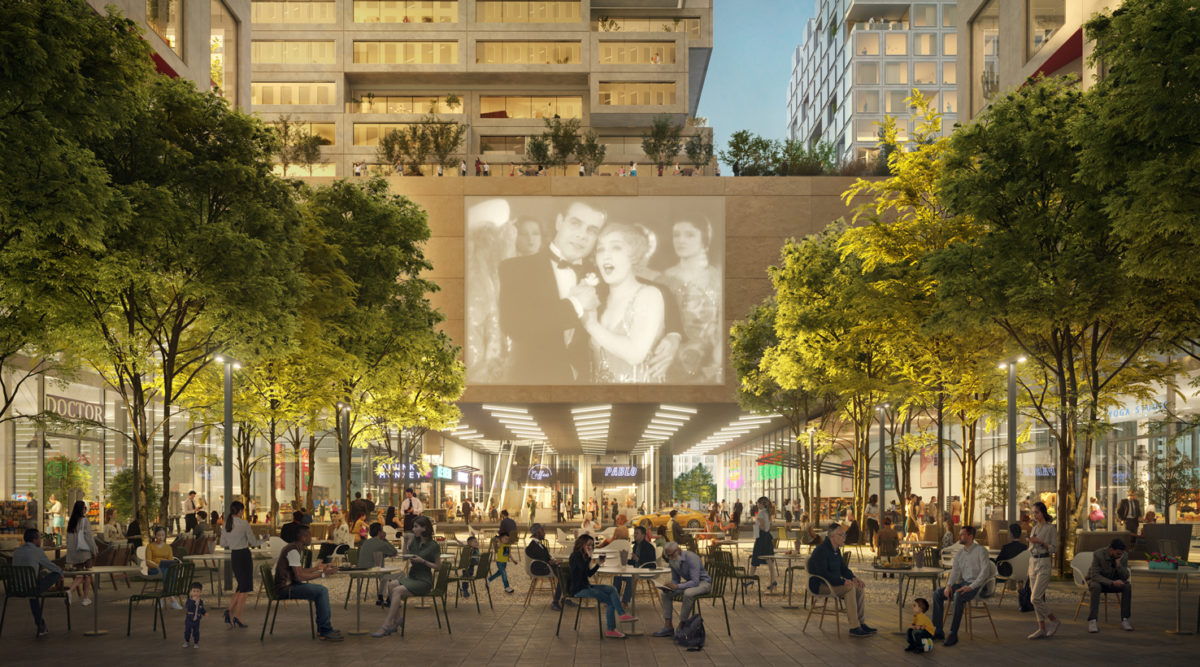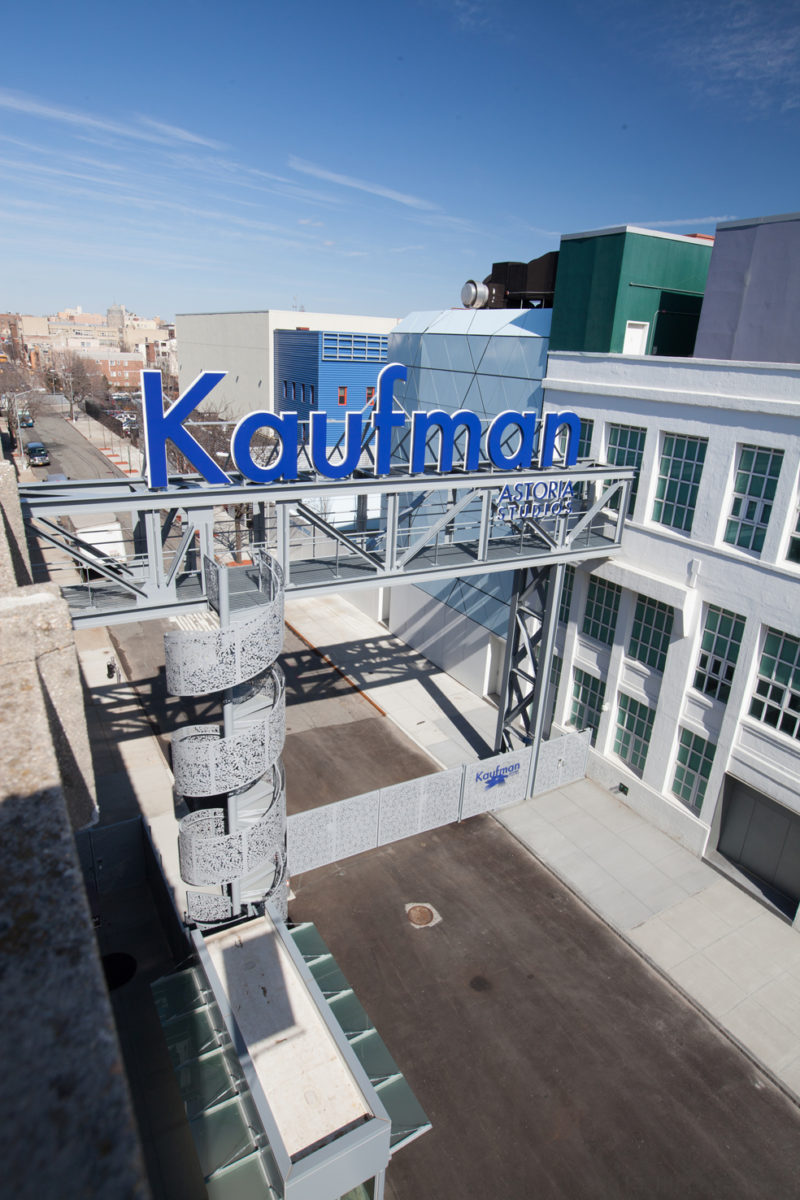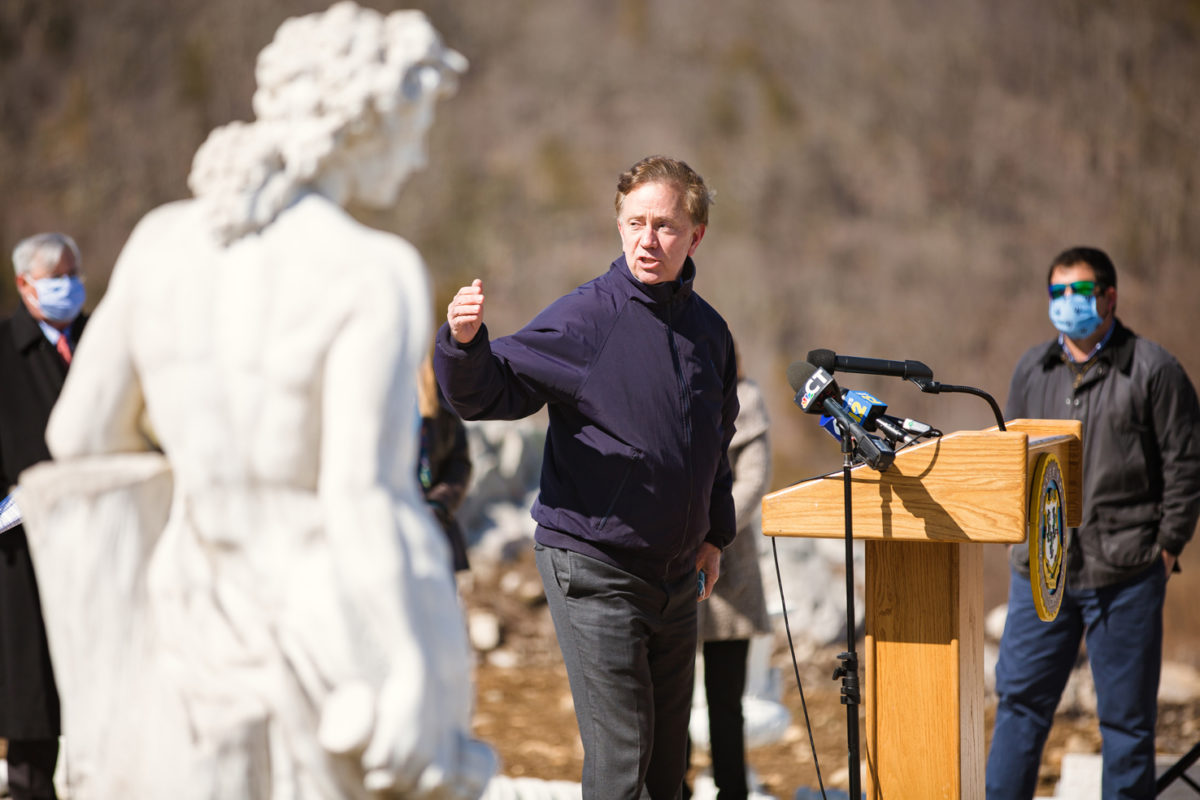Mention blockbusters that have come from Hollywood”™s studios and “Gone with the Wind,” “Star Wars,” “E.T.,” “Avatar” and “Titanic” immediately come to mind. However, for a significant motion picture and television production facility in the New York City metropolitan area, it”™s a massive real estate project that could fit the blockbuster category in terms of cost, scope and impact in revitalizing an entire community.

Kaufman Astoria Studios, the motion picture and TV production facility rejuvenated by real estate developer George S. Kaufman in the 1980s, has joined with Silverstein Properties and BedRock Real Estate Partners to create Innovation QNS, a real estate development proposed for five blocks centered at the intersection of Steinway Street and 35th Avenue in Astoria, Queens.
Silverstein Properties was founded by developer Larry Silverstein who worked on rebuilding lower Manhattan after the 9/11 terrorist attacks. BedRock Real Estate Partners is currently involved with Rose Associates in redeveloping the former United Hospital property in Port Chester.

Coincidentally, there have been recent reports that prospective purchasers have expressed interest in acquiring Kaufman Astoria Studios, with values in excess of $500 million being floated. Last year, competing facility Silvercup Studios in Long Island City was purchased by Hackman Capital Partners and Square Mile capital.
“We”™re not the typical developer. We”™re there. The studio is there. I can”™t pick up the studio and move it to Florida,” Kaufman”™s president and CEO Hal Rosenbluth, who is a resident of Westchester, told the Business Journal. “Several years ago we became the Kaufman Arts District in Queens and we”™re building on that image, working with cultural institutions to be involved in this development, to provide open space that the community desperately needs, to be able to establish a world that becomes a live, work and play world.”

The Innovation QNS project carries an estimated price tag of $2 billion and would include: 2,700 mixed-income apartments with 700 permanently designated as affordable and for seniors; 200,000 square feet of retail, restaurant and entertainment space; 250,000 square feet of space for small businesses, startups and nonprofits in the creative industries such as film; two acres of open space; a new school; and community health and wellness facilities.
The section envisioned for development would begin just a block beyond the studio, which is at 35th Avenue and 35th Street in Astoria.

Back in 1920, Adolph Zukor and Jesse L. Lasky opened the studio to make films for their Famous Players-Lasky Corp., forerunner of Paramount Pictures. It was home to numerous silent films with stars such as Rudolph Valentino and later was where many early Paramount sound films were made, including the Marx Brothers”™ first two features.
In 1933, Paramount moved its productions to the West Coast and the studio space was rented out to various producers. In 1942, the studio was bought by the government and became the Signal Corps Photographic Center and then the Army Pictorial Center.
The Army closed the center in 1970 and it saw only sporadic use until Kaufman started the revitalization process, which attracted not only regular film and TV production to the neighborhood but also institutions such as the Museum of the Moving Image and the Frank Sinatra School of the Arts.
Numerous major motion pictures and hit TV series have been shot at Kaufman Astoria, such as “Orange is the New Black,” “Law & Order,” “The Irishman,” “The Bourne Ultimatum” and “Moonstruck.”
Rosenbluth said that the development team has been working with the city”™s planners and have presented the project to the community board.
“We”™re very much in line with the community. Part of what we did was to build the best production facility we could to help rejuvenate the neighborhood. As part of that development we brought in the UA Kaufman Astoria 14-screen Multiplex, we brought in Pizzeria Uno, we brought in Starbucks. We”™ve been fitting-in the puzzle pieces,” Rosenbluth said.
“We are operating a production facility in a residential area and have learned through the years how to best do that with the least amount of interference with their world.”
Rosenbluth said whether the studio itself will expand into the new project still is an unanswered question.
“The process is a very long process so you”™re looking at five years-plus down the road but we certainly see the growth of commercial office space,” Rosenbluth said. “Whatever the new version of retail is going to be we want it to be here. Astoria needs economic drivers and a friendliness toward business will allow the jobs to come to our neck of the woods.”
Kaufman Astoria Studios has modernized and expanded over the years, now offering nine indoor soundstages and a backlot for shooting outdoor scenes. Its 26,040-square-foot Stage E is the largest east of Hollywood. The new studio gate was designed by noted architect David Rockwell.
 Rosenbluth said that production activity at the studio started picking up again as Covid restrictions eased. During the height of the shutdown, they did manage to keep the staff on payroll consistent with the belief that “you”™re only as good as the people you have.” The studio has put protocols in place for enhanced sanitizing, social distancing, use of masks and other best practices.
Rosenbluth said that production activity at the studio started picking up again as Covid restrictions eased. During the height of the shutdown, they did manage to keep the staff on payroll consistent with the belief that “you”™re only as good as the people you have.” The studio has put protocols in place for enhanced sanitizing, social distancing, use of masks and other best practices.
“The industry was busy. The need for facilities to meet the demand in the industry was ongoing before the pandemic,” Rosenbluth said. “The activity was there but the pandemic shut it down. It”™s not like an office business; you can”™t call it in. You need the actors in front of the camera and you”™ve got to have a crew there and the set lit up in order for it to work to create the production values you expect to see on the screen.”
Rosenbluth emphasized that the film and TV production industry has been one of the pillars of the economy in the state of New York for a long time now.
“It”™s a nine to twelve billion-dollar industry for the state of New York,” Rosenbluth said. “It”™s huge. We”™re responsible for over 100,000 direct and indirect jobs, and good paying jobs.”
With the new Lionsgate studio for film and TV production being built in Yonkers, the Business Journal asked Rosenbluth whether he had looked at possible expansion of Kaufman Astoria Studios into his home county of Westchester.
“I would never say ”˜no”™ to the right thing in Westchester County, but for me our concentration has been in and around the Astoria area for our growth. We recognize that there are a few of us that are the main facilities that get called for the work and other things become overflow,” Rosenbluth said. He explained that production companies begin looking for space outside of the city as his studio, the Silvercup Studios in Long Island City, Steiner Studios in the Brooklyn Navy Yard and others become fully booked.
“They look in the Bronx, look in Westchester, look out on Long Island in Bethpage. Right now the industry has been gangbusters and going up, but I”™ve been around long enough to remember when you could shoot missiles through some of the stages and not hit anybody,” Rosenbluth said.
“It”™s still a premium cost to be shooting in New York. I don”™t care whether you”™re shooting in New Jersey or Westchester or Manhattan or Queens; it”™s still a premium to be here versus some other place like California or Canada or North Carolina or Atlanta. But, tax credits for the industry have helped somewhat offset the premium and have resulted in a huge boost to the economy.”
Kaufman Astoria Studios provides lighting and certain other equipment to production companies as part of its business model and also has a costume collection on-site through an independent company.
Rosenbluth recalled that MGM had a huge illuminated sign with its trademark Leo the Lion to help make its Culver City, California, studio a landmark during its heyday.
“For us, it”™s about the idea that this studio has been there a hundred years making films and television shows, the granddaddy of the production facilities in New York,” Rosenbluth said.
“I think it”™s time that New Yorkers understood what it means to the economy and to be pretty proud when they look on the TV or movie screen and see it was made at Kaufman Astoria. We offer something to the industry and New York that”™s pretty special. I love telling people that we just started filming season 52 of ”˜Sesame Street.”™”






















